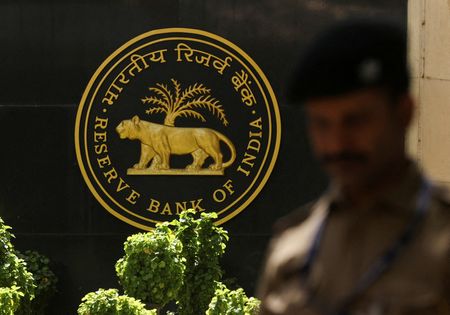By Dharamraj Dhutia
MUMBAI (Reuters) – The Reserve Bank of India’s latest draft guidelines aimed at enhancing the liquidity resilience of lenders, amidst an increased use of digital infrastructure, are expected to boost demand for government bonds over the medium term, traders said.
Late on Thursday, the central bank proposed that banks apply an additional 5% reduction in the stability of retail deposits that have internet and mobile banking access.
If finalised, the norms would be applicable from April 1, 2025.
“Given the significant penetration of internet and mobile banking, the proposed changes are likely to increase the outflows in the next 30 day bucket for banks, thereby posing higher requirements of high-quality liquid assets (HQLA),” Anil Gupta, senior vice president and co-group head financial sector ratings at ICRA said.
Liquidity coverage ratio (LCR) is a certain proportion of HQLA that banks need to maintain at all times. It includes cash, reserves with central banks, and federal government bonds, which can easily be converted into cash.
The new norms will pose requirements for higher liquid assets for the banks to shore up their LCRs. Banks are likely to add government bonds in the run up to the implementation of these guidelines, Gupta added.
The norms also suggest that government bonds would be valued at an amount not greater than their current market value, adjusted for applicable haircuts in line with the margin requirements under the liquidity adjustment facility and marginal standing facility.
“The additional haircut owing to internet enabled transaction facility has arisen from recent global experiences of run offs… These steps add to the withdrawal of accommodation stance as far as liquidity with banks is concerned,” said Alok Singh, group head of treasury at CSB Bank.
However, traders said that there may not be an immediate impact as far as government bond yields are concerned as the said circular will come into effect later.
State-run banks are already holding assets more than what regulatory norms need, but traders said some private banks may have to shore up holdings which could push up demand for bonds at a later stage.
“In such a case, demand for shorter duration bonds would pick-up further,” said VRC Reddy, treasury head at Karur Vysya Bank.
(Reporting by Dharamraj Dhutia; Editing by Nivedita Bhattacharjee)










